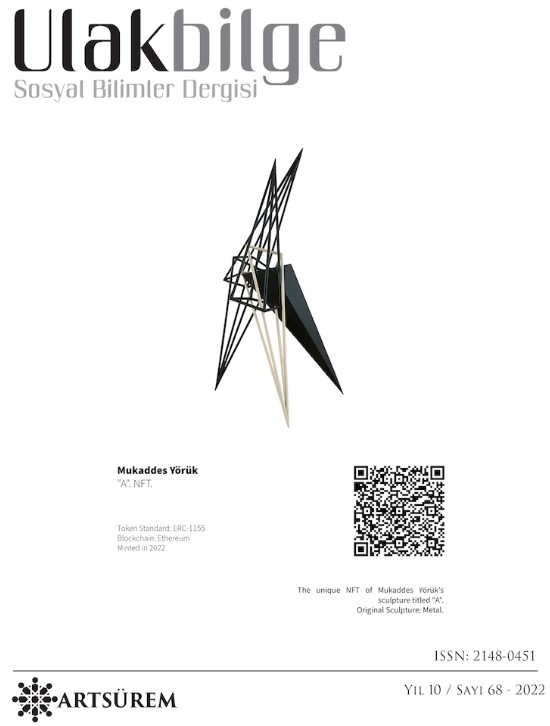TÜRK KÜLTÜRÜNDE NAR MOTİFİ VE TEKSTİL UYGULAMALARINDAN ÖRNEKLER
EXAMPLES OF POMEGRANATE MOTIF AND TEXTILE APPLICATIONS IN TURKISH CULTURE
Author(s): Nurhan Özkan Kuş, Remzi DuranSubject(s): Cultural history, Customs / Folklore, Visual Arts, History of Art
Published by: Sanat ve Dil Araştırmaları Enstitüsü
Keywords: Turkish culture; pomegranate motif; textile;
Summary/Abstract: Fruits have an important place in Turkish culture. In addition to their importance in our cultural history, the fact that the main and figurative meanings are loaded on fruits has also led to their use in art. The pomegranate fruit has been compared to the world in shape, its seeds to people, and its separation by dice to continents. In addition, iconographic meanings such as fertility, abundance, wealth, sultanate, and paradise were loaded. Because of these features, it has been loved as an ornament motif in history; It has taken its place as a two-dimensional and three-dimensional decoration element on the walls of mosques, ceilings of houses, cabinet doors, tiles, ceramic and copper pots, fabrics, embroidery, tombstones, miniatures, woodwork, religious and civil architectural works, usage items. This motif has not only enriched the ornamentation with its beauty of form, but also with its symbolic values, which have historical depth and intensity of meaning, extending to legends, and has a deep-rooted history in Turkish ornament art. In this study, it is aimed to reveal the iconographic meanings of the pomegranate motif, which is among the important motifs of Turkish culture, and the stylistic change in textile applications according to centuries. In this context, a literature review about the pomegranate motif was made, its place in Turkish culture, its importance, iconographic meanings were determined, and textile applications were examined. While dealing with pomegranate motif textile applications, attention was paid to the different types of textiles. While 3 of them were examined on site by obtaining permission from the museums, 10 of them were taken from the books published by the museums. During the examinations, detailed photographs of the works were taken, and information about the work was obtained through evaluation forms. The pomegranate motifs on the textile works were drawn using the procreate program.
Journal: Ulakbilge Sosyal Bilimler Dergisi
- Issue Year: 10/2022
- Issue No: 68
- Page Range: 21-33
- Page Count: 13
- Language: Turkish

